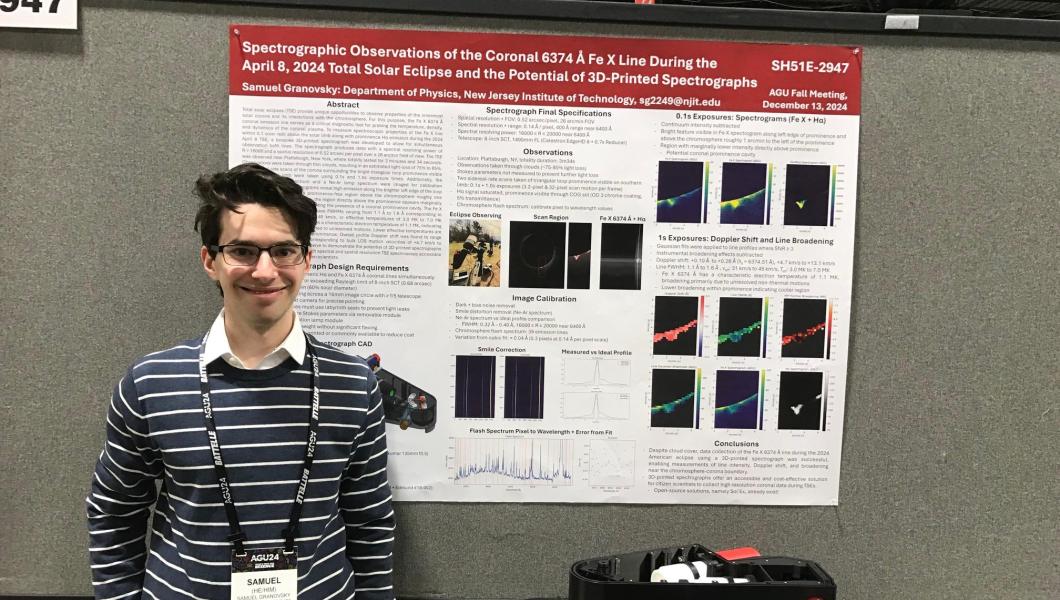New Essay Collection by NJIT's Burt Kimmelman Released to Early Praise

Burt Kimmelman, acclaimed poet, literary scholar and distinguished professor in NJIT’s Department of Humanities and Social Sciences, is receiving early praise for his new eclectic collection of essays, titled Visible at Dusk.
The 15 essays are a diverse array of new and previously released material revised from its original form. In his introduction to the book, literary critic Edward Foster notes Kimmelman’s “enviable ability to unravel a range of complex subjects, speaking with equal authority on the diamond district in Antwerp, conceptualism in poetry, Czech culture, film noir and much more.”
“Visible at Dusk started at the beginning of the COVID lockdown in March of 2020, when I began reflecting a lot more and revisiting essays I’ve published over many decades,” said Kimmelman. “In bringing this book together, I wanted each selection to have its own voice, to be complementary to the rest and stand alone.
“Because some of the essays involve art and architecture, I wanted to have visual images included and my publisher, Dos Madres Press, obliged me. The book’s design is striking, in fact. The result, I hope, is a collection that is as much an art object as a variety of critical and playful essays, with the idea that when you juxtapose them something larger can be seen.”
Thoughtfully presented illustrations accompany the 434 pages of text, which span more than 30 years of Kimmelman’s work as an essayist, “traversing cultures and their artifacts, and weighing the reach of the arts, especially in the avant-garde as the modern becomes postmodern.”
The scope of work includes autobiographical and cultural reflections, such as “Film Noir” — the impetus for Visible at Dusk written at the beginning of the pandemic — which is about the iconic black-and-white film genre that shaped Kimmelman’s formative years in 1950s America and then his later writing.
“Letter from Antwerp,” one of the book’s travel essays, offers vivid observations of the port city’s striking architecture, in contemplating parallel histories of the world’s diamond trade and the Jewish Diaspora, while on a walk from the bustling Antwerpen-Centraal train station to Hoveniersstraat — where 85% of the world’s diamonds changes hands.
The book’s literary critiques include a study of the “New England Mind,” focusing on the relationship between Henry David Thoreau and two prominent recent poets, Susan Howe and William Bronk. Another of these critiques, “Oppen→Schwerner→Heller→Finkelstein (Tracking the Word),” examines a major lineage in contemporary avant-garde American literature.
The book has received positive reviews from the likes of the journal B O D Y as well as illustrious authors and literary critics — such as Johanna Drucker who calls the book “critical, metaphysical, and literary,” and Elisabeth Joyce who singles out its attention to “poetics’ philosophical and aesthetic underpinnings.”
Kimmelman has previously received recognition for 10 published collections of poetry, which have been featured on National Public Radio, eight volumes of criticism and more than 100 articles mostly on literature, as well as art and architecture. His monograph, The Poetics of Authorship in the Later Middle Ages (1996, 1999), continues to be referenced by scholars in the field. He teaches literary and cultural studies at NJIT.

